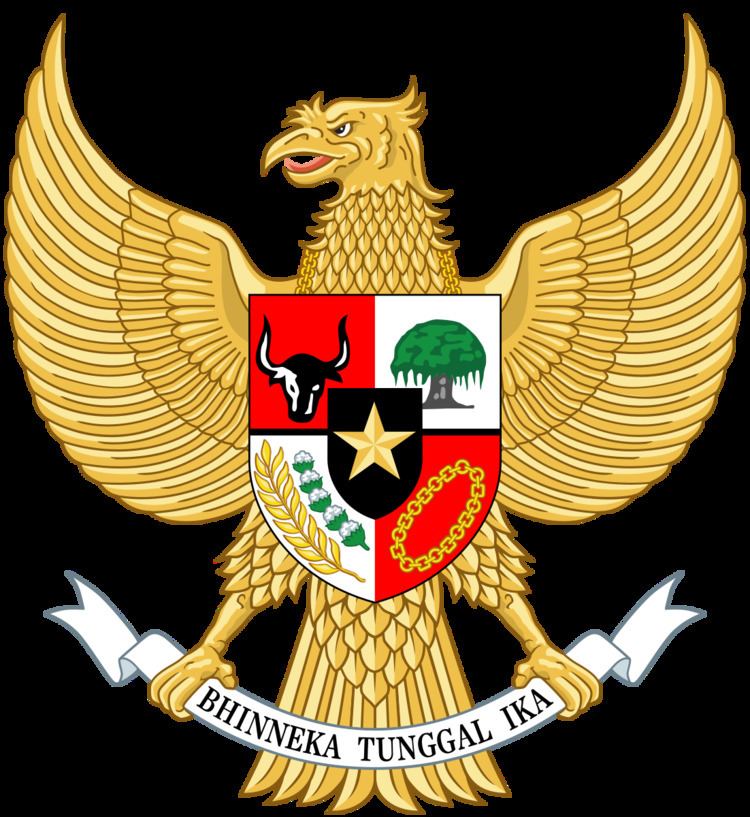 | ||
Elections in Indonesia have taken place since 1955 to elect a legislature. At a national level, Indonesian people did not elect a head of state – the president – until 2004. Since then, the president is elected for a five-year term, as are the 560-member People's Representative Council (Dewan Perwakilan Rakyat, DPR) and the 128-seat Regional Representative Council (Dewan Perwakilan Daerah).
Contents
- Early elections 1955
- Beginning of the New Order 1971
- Elections under the New Order 19771997
- Election reforms 1999present
- 2009 legislative and presidential elections
- 2014 legislative and presidential elections
- Future elections
- References
Members of the People's Representative Council are elected by proportional representation from multi-candidate constituencies. Currently, there are 77 constituencies in Indonesia and each returns 3-10 Members of Parliament based on population. Under Indonesia's multi-party system, no one party has yet been able to secure an outright victory; parties have needed to work together in coalition governments. Members of the Regional Representative Council are elected by Single Non-Transferable Vote. There, Indonesia's 34 provinces treated as constituencies and, regardless of the size and population, every provinces return 4 senators.
Starting from the 2015 unified local elections, Indonesia start to elect governors and mayors simultaneously on the same date.
The voting age in Indonesia is 17 but anyone who has an ID card (Indonesian: Kartu Tanda Penduduk (KTP)) can vote, since persons under 17 who are or were married can get a KTP.
Early elections (1955)
Indonesia's first general election elected members of the DPR and the Constitutional Assembly of Indonesia (Konstituante). The election was organised by the government of Prime Minister Ali Sastroamidjojo. Sastroamidjojo himself declined to stand for election, and Burhanuddin Harahap became Prime Minister.
The election occurred in two stages:
The five largest parties in the election were the National Party of Indonesia (Partai Nasional Indonesia), Masyumi, Nahdlatul Ulama, the Communist Party of Indonesia (Partai Komunis Indonesia, PKI), and the Indonesian Islamic Union Party (Partai Sarekat Islam Indonesia).
Beginning of the New Order (1971)
The first election after the establishment of the "New Order" took place on 5 July 1971. Ten political parties participated.
The five largest political parties were Golkar, Nahdlatul Ulama, the Muslim Party of Indonesia (Parmusi), the Indonesian National Party and the Indonesian Islamic Union Party.
Elections under the New Order (1977–1997)
Elections following the mergers were held under the government of President Suharto. In accordance with the legislation, these were contested by three groups; Golkar, the PPP and the PDI. All elections in this period were won by Golkar.
To ensure that Golkar always won more than 60 percent of the popular vote, the New Order regime used a number of tactics. These included:
Election reforms (1999–present)
The 1999 election was the first election held after the collapse of the New Order. It was held on 7 June 1999 under the government of Jusuf Habibie. Forty-eight political parties participated.
The six largest parties which passed the electoral threshold of 2% were the Indonesian Democratic Party-Struggle (Partai Demokrasi Indonesia Perjuangan), the reformed Golkar Party, the United Development Party (Partai Persatuan Pembangunan), the National Awakening Party (Partai Kebangkitan Bangsa), the National Mandate Party (Partai Amanat Nasional), and the Crescent Star Party (Partai Bulan Bintang).
Under the constitution, the new President was elected by members of both houses of Parliament in a joint sitting. This meant that although the Indonesian Democratic Party-Struggle won the largest share of the popular vote, the new President was not its nominee, Megawati Sukarnoputri, but Abdurrahman Wahid from the National Awakening Party. Megawati became Vice-President.
During its 2002 annual session, the People's Consultative Assembly (MPR) added 14 amendments to the Constitution of Indonesia. Included in these amendments were measures to reorganise the Indonesian legislature. Beginning in 2004, the MPR would be composed of the existing People's Representative Council (DPR) and a new Regional Representative Council (DPD). Because all the seats in the MPR would be directly elected, this called for the removal of the military from the legislature, whose 38 seats for the 1999–2004 period were all appointed. This change and an amendment for direct election of the President and Vice-President were major steps for Indonesia on the road towards a full democracy.
The 2004 legislative election was held on 5 April 2004. A total of 24 parties contested the election. The Golkar Party won the largest share of the vote, at 21.6%, followed by the Indonesian Democratic Party-Struggle, the National Awakening Party, the United Development Party and newly formed Democratic Party. 17 parties won legislative seats.
2009 legislative and presidential elections
Legislative elections for the Regional Representatives Council and the People's Representative Council were held in Indonesia on 9 April 2009. The presidential election was held on 8 July, with President Susilo Bambang Yudhoyono winning enough of the vote to make the run-off election unnecessary.
2014 legislative and presidential elections
Legislative elections for the Regional Representatives Council and the People's Representative Council were held in Indonesia on 9 April 2014. The presidential election was held on 9 July 2014, with Joko Widodo winning the election.
Future elections
Notes:
